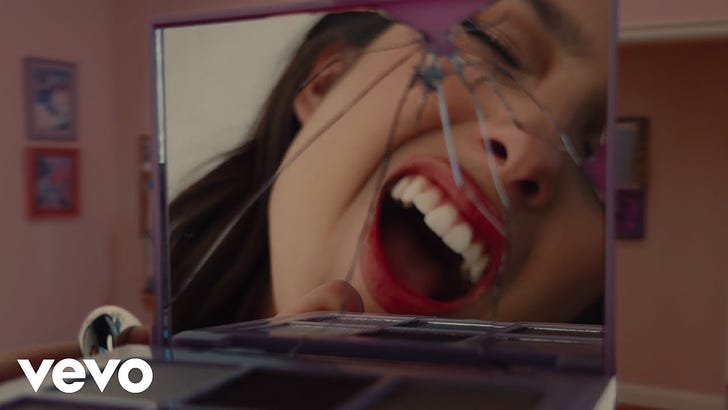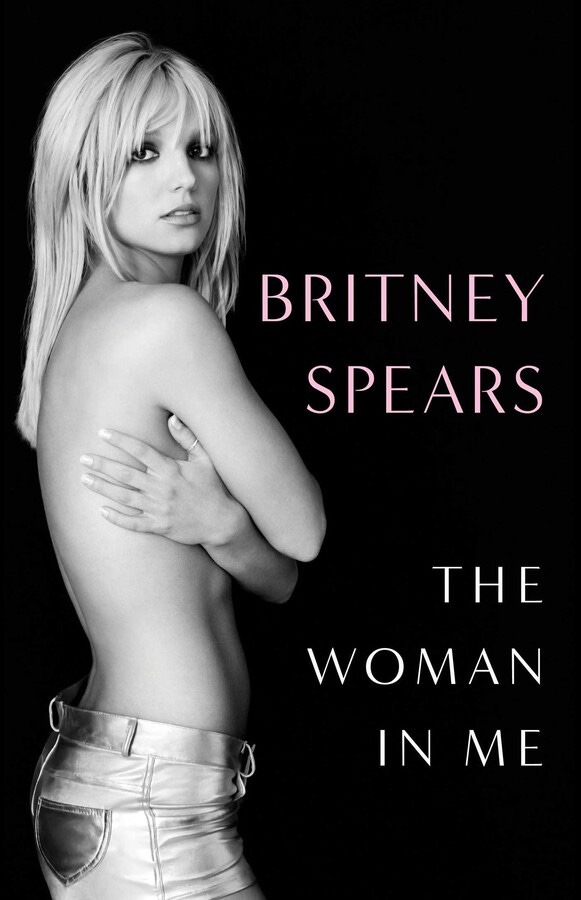For last weekend’s Sunday Times, I interviewed former country prodigy LeAnn Rimes (who is now 41 and, as Olivia Rodrigo sings in “Teenage Dream”, not simply “great for her age” but actually really good) and current queen of psychotherapy Esther Perel (fascinating on the shift from 1970s anti-establishment impulses to contemporary appeals to authority when it comes to settling sexual wrongs).
A quick recommendation: I’m going to write about Dream Scenario in the “watched” section next week, but strongly urge you to catch it at the cinema before then. It’s very funny, it’s very horrifying and it’s very probably Nick Cage’s greatest performance — you need to see it, and the less you know, the more you’ll be delighted.
And I need to give a shoutout to this review of Toxic from Fiona Sturges in the Guardian: “a broader account of this febrile period in 21st-century culture, which looks ever more baffling the further we travel from it, has felt long overdue. With the variously disturbing and illuminating Toxic, Ditum has risen to the challenge.” One for the ego wall.
Listened
Olivia Rodrigo, “Get Him Back!”
I took a couple of weeks off the Olivia Rodrigo album to recover from the disappointment of not getting tickets for any of her UK gigs. But now I’m back on it, and giving extra heavy play to this absolute banger that hinges ingeniously on the “regain/revenge” double meaning of “get him back” to capture the particular madness of the teenage girl scorned, and sounds a lot like the music I was listening to when I was a teenage girl. (Bring on the Juliana Hatfield revival imo.) More on my Olivia love in my pop column in the next issue of the Critic. The video is kind of a do-over of Michel Gondry’s one for Kylie’s “Come Into My World”, which might be my favourite thing either of them has done, so I’ll take that too.1
Watched
The Crown season six (Netflix)
It’s tasteless to call this a “car crash”, given it’s the season of The Crown that covers Diana’s death. On the other hand, this season includes Diana and Dodi popping back from the dead dressed in black polo necks to give counsel to the living, so “good taste” feels like an extremely distant concept. Presumably we should imagine the ghost of world’s worst chauffeur Henri Paul bobbling around behind Princess Margaret making sorrowful faces about her booze consumption. (“Ah madame! Zee cost oz plaisir ees vraiment grand!”)
It’s hard to remember as you watch Ghost Diana counselling the Queen on “what it means to be British”, but before The Crown became Randall and Hopkirk (Deceased) with breeding, it was a prestige drama undertaking a grand experiment in describing the life of the nation. The deft portrayal of Philip’s background with all its tragedy and shame; the devastating Aberfan episode in season three.
There is still some of that in the first half of season six — the show remains astute about the way all parties in the Diana-Charles-Palace-Fayed reputational tussle were playing the press, and there’s a clever bit of fourth-wall breaking at the start of episode two which intercuts to-camera addresses by a fusty traditional society photographer and one of the new and aggressive (and glamorous) paparazzi. It’s still good at locating telling moments where normie-world and royal-world meet, like the dog walker who becomes the witness to Diana’s death.
But the glimpses of quality just make the kitsch of season six feel even more egregious. The Crown has always been soapy (because the royals are soapy: I would guess that Majesty Magazine and Inside Soap have a hefty shared readership), but now it’s Sunset Beach rather than Coronation Street. Magical realist trash rather than warm realism. Obviously I binged the lot. Come on, it’s what Diana — a woman who, as this series is as pains to point out, was highly susceptible to supernatural beliefs — would have wanted.
Read
Britney Spears, The Woman in Me (Gallery Books)
From a selfish perspective, I was enormously worried that The Woman in Me (which came out two days before Toxic) was going to undermine one or other of my key Britney theses. But apart from the (devastating) account of the abortion she had when she was with Justin Timberlake, there’s not much here we don’t already know. The draw, then, is hearing it in Britney’s words — except we don’t, because this is heavily ghostwritten.
That’s not a bad thing in itself. The role of ghost is a serious writing gig, and there are some great celebrity memoirs that are all the better for the ministrations of a co-author — Spare for one, Elton John’s Me for another. But when ghosting works, it’s because the ghost (who in Britney’s case goes uncredited, against the trend in this kind of writing) captures the subject’s voice. We know Britney’s voice: it’s the absolute chaos of her Instagram captions, the raw plaintive injury of her conservatorship hearings testimony. This book doesn’t sound like Britney. It sounds like someone trying to make it sound like Britney is OK.
Which creates some weird tensions, like when she describes her 72-hour Vegas marriage to high school friend (and later Q Anon marauder) Jason Alexander as a “goof-around” she did as a “joke” and her family made “way too big of a deal out of”. This is entered into the text as a perfectly reasonable statement when, let us be honest, her family’s sharp work in annulling her legal bond to a hick grifter is one of the few times you could say they were definitely acting in her interests. Surely a Britney who’d confronted her demons would understand that this was a bender too far.
Britney has always been a compelling star because her image is one of irreconcilable opposites: the slutty virgin, the self-determined slave. Like an Escher drawing, the impossibility keeps yanking your attention back to her: you want to stare until it all makes sense, and because it will never make sense, you’ll never stop staring. The Woman in Me is the same trick again: the liberated narrator who is repeatedly, discomfittingly revealing that she isn’t as free as you (or she) would like to believe.
Gimme, gimme more…
You can’t get an interview with Taylor Swift, but you can stalk the places she eats! Fun from New York Magazine.
“Hundreds of hours of highly explicit footage have done little to change our opinions of the celebrities targeted by deepfakes. Yet a mere string of words, a libel that satisfies an urge to sexually humiliate politically ambitious women, has stuck in people’s heads through time: Catherine the Great had sex with a horse.” New Yorker review of A History of Fake Things on the Internet by Walter Scheirer.
Jonathan Freedland in the Guardian on the (destructive) internal politics of Israel and Palestine. Would you believe it, they’re actual countries rather than shadow puppets for Anglo-American factionalism.
This thought made me wonder what Gondry has been doing lately: apparently his first feature in eight years came out this year and is about a director trying to vanquish his creative demons! Which I should probably watch before I say “oh dear” about it, but does not make me feel intrinsically hopeful.




